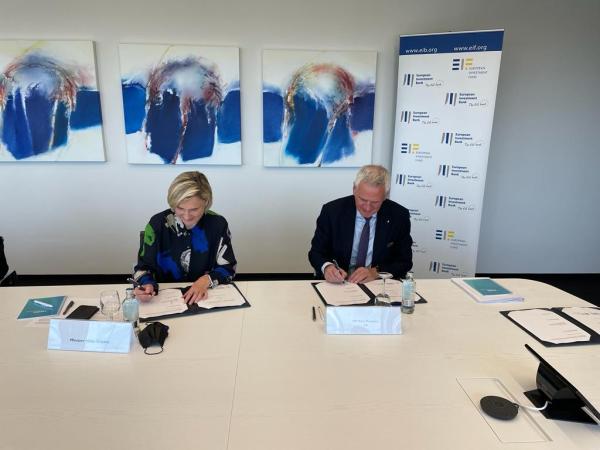
- The EIB and The Flemish Ministry of the Economy have signed an MoU on hydrogen.
- The agreement will help to identify projects that could receive EIB financing and support their bankability.
- Total investment in clean hydrogen in Europe is expected to reach up to €470 billion by 2050.
The European Investment Bank (EIB) and the Flemish government represented by Vice Prime-Minister and Minister for the Economy Hilde Crevits. The agreement has the goal of creating a framework for further collaboration between Flanders and the EIB in financing and implementing Flemish hydrogen projects. The signature comes at a time when the Flemish government is presenting its first “projects of common interest” (PCI) in the field of hydrogen to the European Commission.
“Flanders has enormous ambitions in the field of sustainable hydrogen, from the production of green hydrogen to the implementation of that hydrogen for sustainable steel or fuels, as far as development of cheaper hydrogen production plants. The PCI projects we presented to the Commission today are a perfect fit with the Flemish vision for hydrogen, which makes it a perfect moment to further underline our commitment through this ‘Memorandum of Understanding’ with the EIB. With the joint commitment that we engage in, it will become easier to attract European financing to make Flemish hydrogen projects a reality.” stated Flemish Minister of Innovation Hilde Crevits.
“As the EU’s climate bank, the European Investment Bank is committed to making available the needed finance and expertise to technologies that can slow global warming.” Said EIB Vice-President Kris Peeters. “At the EIB we invest a lot in alternative energy sources, including about €550 million in loans to projects that are specifically hydrogen-related. We also currently have a pipeline of further projects in the sector of €1 billion. In that context, I am glad that Flanders and the EIB have come together in this Memorandum of Understanding. It marks a clear joint signal towards the sector that, together, we want to support hydrogen projects in Flanders. Therefore, we look forward to future financing applications to support hydrogen investments.”
Hydrogen technology can play a crucial role in achieving a carbon neutral EU economy by 2050. The current share of hydrogen in Europe’s energy mix is less than 2%, but it could rise to 14% by mid-century. The European Hydrogen Strategy, which is part of the European Green Deal, aims to enable widespread use of hydrogen by 2050. According to the strategy, green hydrogen will be produced on a systemically relevant scale between 2030 and 2050. Consequently, investments in renewable or low-carbon hydrogen will need to increase. The strategy anticipates that between €180 billion and €470 billion will be required for production capacities in the European Union by 2050. Alongside the European Commission, Hydrogen Europe is one of the three participants of the European Joint Undertaking on Hydrogen, a public-private partnership working to facilitate the market introduction of clean hydrogen technologies in Europe.
Obtaining green, zero-emission hydrogen is very costly. In the EU context, the European Investment Bank is a key funding partner. Over the past eight years, the EU bank has provided over €2 billion in advisory and financial support to projects that use hydrogen technologies. Projects that focus on scaling up deployment in the transport sector by supporting new hydrogen fleets and related infrastructure have also received funding. With its expertise and track record in financing innovative technologies and infrastructure — notably offshore wind and batteries — the EIB is well placed to support the development of the hydrogen ecosystem in Europe. Currently, the Bank supports technologies such as electrolysers, catalysts and fuel cells. It also finances large-scale hydrogen production, including electrolysis, carbon capture and storage and hydrogen stations.
In 2020 alone, the EIB made available nearly EUR 1.18 bln in loans for Belgian projects in various sectors, including renewable energy, circular economy, water management, education and SMEs.
There are various types of hydrogen, categorised by production process and the resulting greenhouse gas emissions. Clean hydrogen (“renewable hydrogen” or “green hydrogen”) is produced by the electrolysis of water using electricity from renewable sources and does not emit any greenhouse gases during its production. It is distinct from grey hydrogen, which is produced from methane and releases greenhouse gases into the atmosphere, and blue hydrogen, which captures those emissions and stores them underground to prevent them from causing climate change.

©EIB
Download original

©EIB
Download original

©EIB
Download original

©EIB
Download original